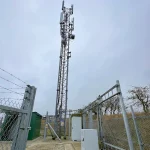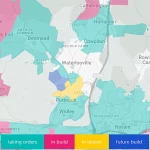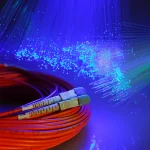Openreach SOGEA Standalone Broadband Starts Early Market Rollout
Openreach (BT) has confirmed that their new Single Order Generic Ethernet Access (SOGEA / SOGFast) product, which enables consumers to buy a standalone FTTC “fibre broadband” (VDSL2 or G.fast) line from an ISP without the voice (phone) service, has now entered Early Market Deployment and published revised prices.
The Early Market Deployment Launch (EMDL) usually comes before a full commercial launch, which means that ISPs can start to sell related products to consumers but they have to do so in the knowledge that the new service could still be subject to change. For example, the G.fast ultrafast broadband technology is still in EMD but despite that it’s now being offered by quite a few ISPs, including big players like Sky Broadband, BT and TalkTalk.
In this case Openreach said they expect the new SOGEA / SOGFast products to be in EMD – starting on 18th September 2019 – for around 3-4 months before the full commercial launch. Sky Broadband has already became one of the first major ISPs to sell such packages alongside their new G.fast based ultrafast broadband products (here), which do in fact include a phone service but only via their own VoIP (internet calls by sky) solution.
Advertisement
At this point some of you may be wondering just what the heck I’m talking about, so let’s recap..
What the Heck is SOGEA?
At present most of us connect to a service on Openreach’s national network and as such we must buy their phone service alongside copper line rental (included by default), with broadband being optionally added on top (most ISPs bundle the two together by default so you won’t notice). An exception exists for “full fibre” (FTTP) ultrafast broadband lines (i.e. no copper involved), which can already be purchased in a data-only (no phone) variant.
However the majority of people only keep a fixed line phone (voice calls) today because it’s necessary for their broadband to work and increasingly few bother to use this for making calls, with Mobile handsets and VoIP often proving to be more cost effective. On top of that the nationwide roll-out of “full fibre” networks will eventually make the old phone services irrelevant (old analogue phone services will be withdrawn in 2025).
In response Openreach created the SOGEA product (the G.fast version has a super silly name – SOGFast), which allows you to buy a broadband connection without any analogue phone (voice) service attached. Instead if you want a voice service on a SOGEA line then it will need to be an IP-based solution like VoIP, which in the future will either come optionally from your ISP or a dedicated provider (e.g. Vonage).
Advertisement
The service also introduces a new front plate for the latest NTE5C Master Socket (pictured), which where necessary has been designed to prevent analogue voice being reinjected onto Openreach’s network from the end users premises (SOGEA technical details). All of this will help to support a future direction where voice calling is largely handled by VoIP.
EMD Launch
The wholesale pricing for Openreach’s EMD launch of SOGEA / SOGFast has only changed a little bit from the pilot stage. For example, the annual rental of an 80Mbps FTTC tier is now £204.96 +vat (£17.08 per month) instead of £205.31 (£17.10 per month) before. Obviously this is not the price that you or I will pay at retail as ISPs have a lot of costs to add on top (service features, network / capacity, 20% VAT, profit margins etc.)
Broadly speaking this pricing is roughly similar to if you were to bundle FTTC and phone line rental together under the old approach, hence our note above about the price difference being tiny (don’t expect any huge savings).
SOGEA and SOGFast Bandwidth Variant Rental Charges
Advertisement
| Feature | Annual Rental £ Exc VAT |
|---|---|
| SOGEA 40/10 Mbit/s | 147.12 |
| SOGEA 55/10 Mbit/s | 186.36 |
| SOGEA 80/20 Mbit/s | 204.96 |
| SOGEA 160/30 Mbit/s | 229.44 |
| SOGEA 330/50 Mbit/s | 265.44 |
Installation Charges (One-Off)
SOGEA or SOGFast Standard Managed Install £83
SOGEA or SOGFast Premium Managed Install £103
SOGEA or SOGFast New Line Provide with Standard Managed install at Premises £105 (special offer available)
SOGEA or SOGFast New Line Provide with Premium Managed install at Premises £125
The above installation charges reflect engineer visits. A standard install usually covers the basics, which verifies that the service works and may also include the fitting of a new NTE5C. By comparison a premium install offers a complete in-home service, including Wi-Fi optimisation, extra testing (VoIP etc.) and the addition of up to two data extension kits.
Additionally, Openreach are offering ISPs a limited time Special Offer available on New Line Provide with Standard Managed Install, which will be available at the reduced price of £82 until 31st January 2020.
“We’re launching Standard New Line Provide at this reduced price as we will not be including a New Line Provide with a Self-Install journey on SOGEA, as we do not believe providing the same Self Install experience as FTTC provides the optimal customer experience. We’ll discuss requirements with CPs in the next few weeks to identify the right install options for SOGEA.”
The lack of a self-install (PCP Only) option may annoy some consumers but it’s likely to stem from the need to fit a new Master Socket in most homes, which given the new approach is somewhat unavoidable. Obviously this can add an extra cost but on the upside Openreach may also be able to identify and rectify home wiring faults that could have previously caused you slower broadband speeds.
At present Sky (and some BT business packages) are the only ISPs that we know of with SOGEA based broadband packages but many others will soon follow. We suspect that some may initially struggle with the question of how to promote or transition their product line-up to such a service, particularly since on the surface it doesn’t offer much of a cost saving and most people currently take a bundle. Some consumer confusion may be inevitable.
At this point we should highlight that a number of other ISPs, such as AAISP and Freeola, have already tweaked their existing phone line services to remove the voice component for those who only seek a broadband line (i.e. it’s not SOGEA but follows the same sort of idea). However no doubt they too may transition to SOGEA now that a proper alternative exists.
Mark is a professional technology writer, IT consultant and computer engineer from Dorset (England), he also founded ISPreview in 1999 and enjoys analysing the latest telecoms and broadband developments. Find me on X (Twitter), Mastodon, Facebook, BlueSky, Threads.net and Linkedin.
« Better Broadband for Oxfordshire UK Project Adds New Coverage Map

















































Comments are closed